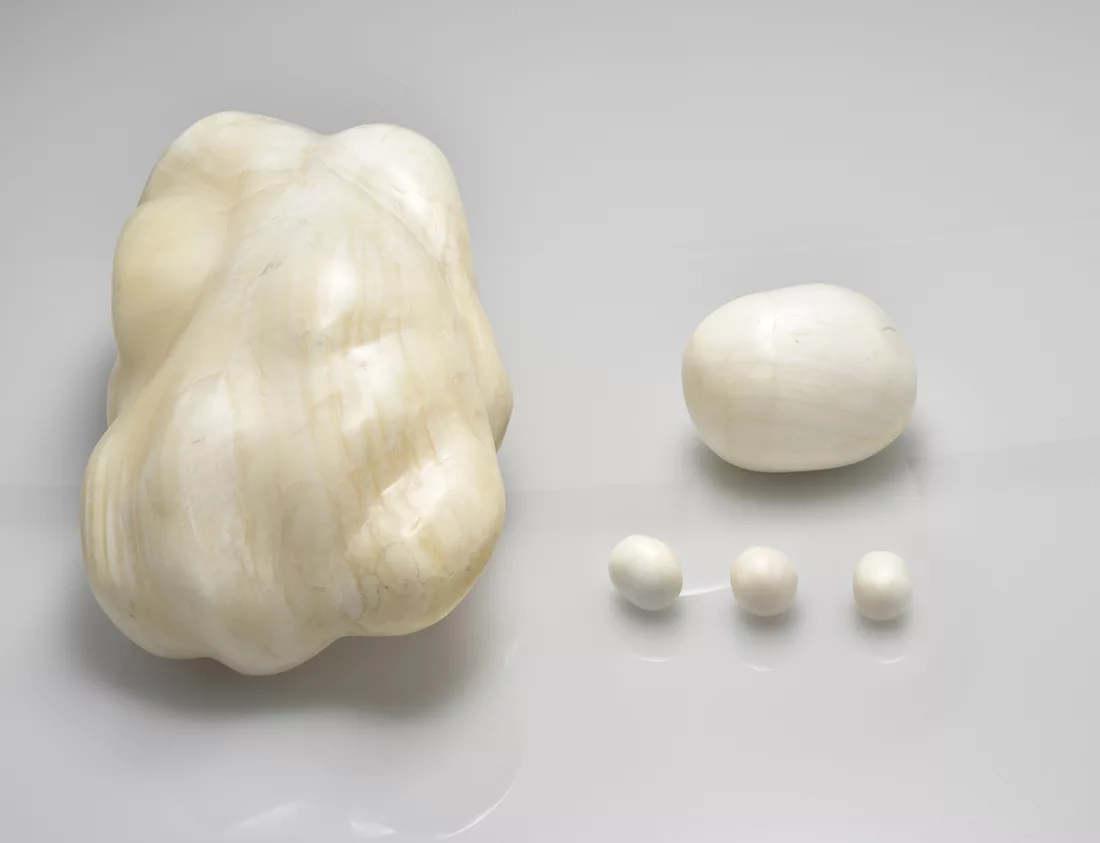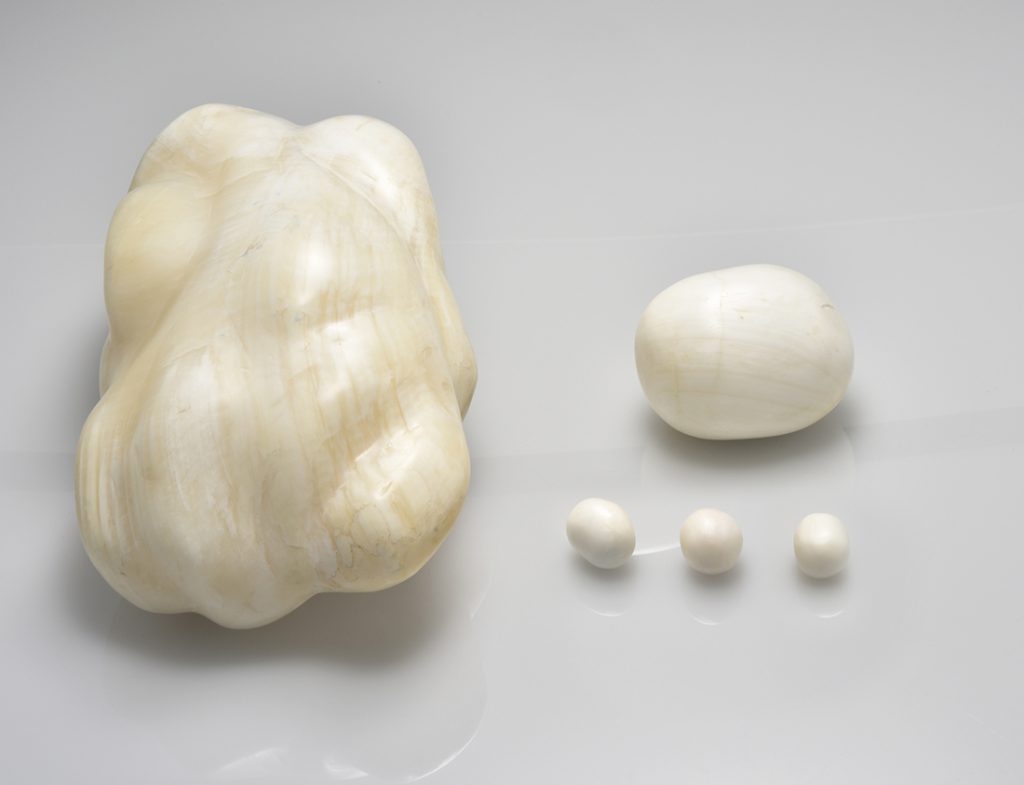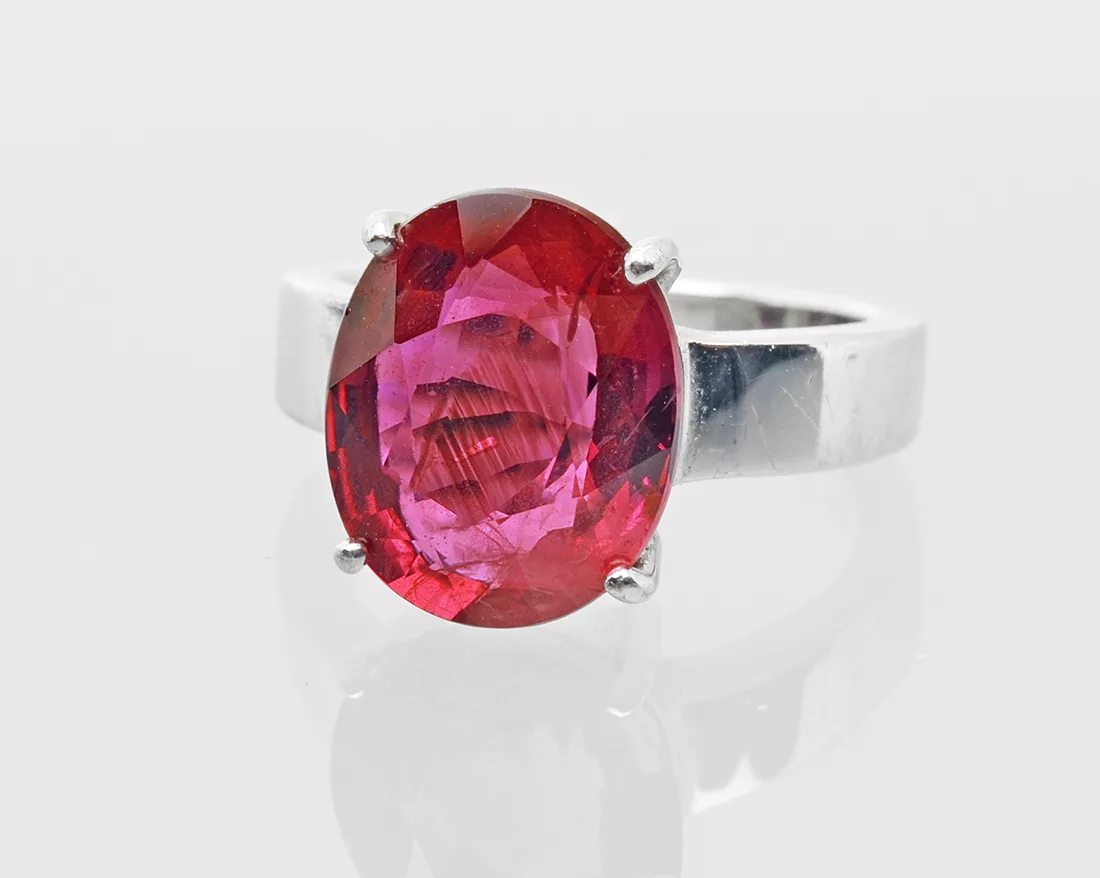
Fake Tridacna Pearls

by Dr. Michael S. Krzemnicki, first published in Facette 23 (February 2018)
Fake pearls are beads (of whatever shape) which have been cut entirely from shell material. A perfect source for the production of such fake pearls is the Tridacna clam, amongst the largest living bivalve mollusc with a massive and thick shell of up to 110 cm diameter, mainly living along shallow coastal waters in the Indo-Pacific region (Rosewater, 1965). Due to recent the media coverage of an exceptional ‘pearl’ from a giant clam (Tridacna) and its intriguing provenance (August 2016, http://www.bbc.co.uk/news/world-asia-37167179), the SSEF is currently confronted with numerous requests to analyse similar ‘giant pearls’.
In summer 2016, we then had the opportunity to analyse a series of five items, which were submitted to us as natural Tridacna pearls originating from Palawan, an island in the east of the Philippines, including one specimen of 6.8 kg (!) and 27 cm maximum length (see Figure 1).
A detailed study of these items quickly revealed that they were fake pearls, cut from the shell of Tridacna clams to imitate genuine pearls. The most striking feature of all these fake pearls was a distinct and partly complex layering, which was however not related to the shape of the items, but merely represents the seasonal growth layers of the Tridacna clam shell from which these fake pearl had been cut. Furthermore, the surface showed distinct polishing marks in random orientations, indicating rushed production of these fake pearls. In some of the studied samples we could also observe weak flame structures similar to those known from queen conch shells and pearls (Strombus gigas) due to densely interwoven bundles of aragonite fibres (Hänni 2010).
Although natural pearls or blister pearls have been occasionally reported in Tridacna shells, they have rarely been of great interest due to their often rather dull whitish appearance and their commonly baroque shape. However, we would like to remind readers that not all non- nacreous white natural pearls claimed to be pearls from Tridacna clams necessarily originate from Tridacninae. They may also be the beautiful product of other mollusc species and be mislabelled as Tridacna clam pearls as there is still today no method for species identification of such non-nacreous white pearls, very much in contrast to nacreous pearls which among others can be separated genetically (Meyer et al., 2013) and by spectroscopic methods.
It is not the first time that we encounter beads cut from the shell of molluscs to imitate pearls, but the described items were definitely the largest fake pearls ever analysed at SSEF.
Although often uncritically distributed by news agencies and accompanied by ‘fantasy’ documents and appraisals, it should be noted that Tridcana clams are among the most endangered clams and protected by CITES (2016). Any trade of pearls, shell, or even fake pearls is strictly regulated by customs and requires official documentation.
A detailed report about these fake pearls, including a comparison to fake pearls previously tested at SSEF is published in the Journal of Gemmology Vol. 35, No. 5, 2017.



